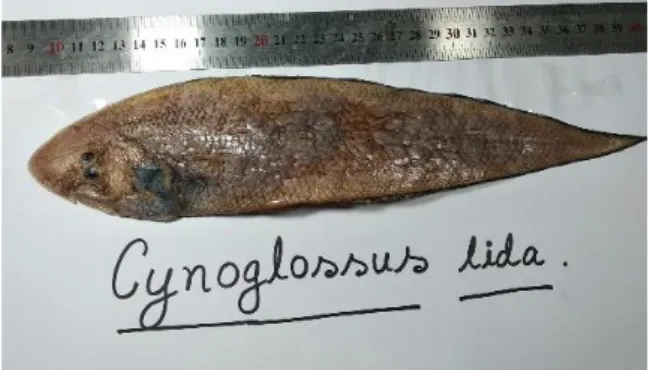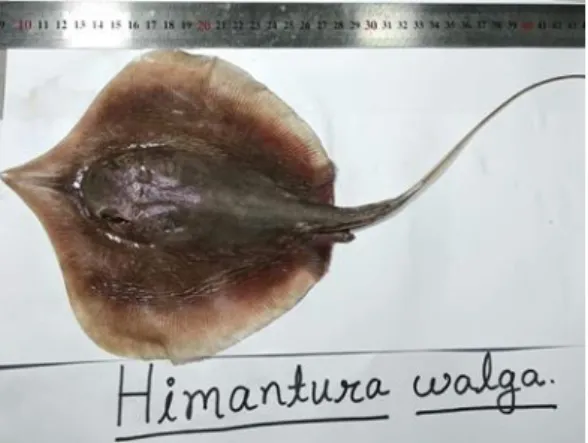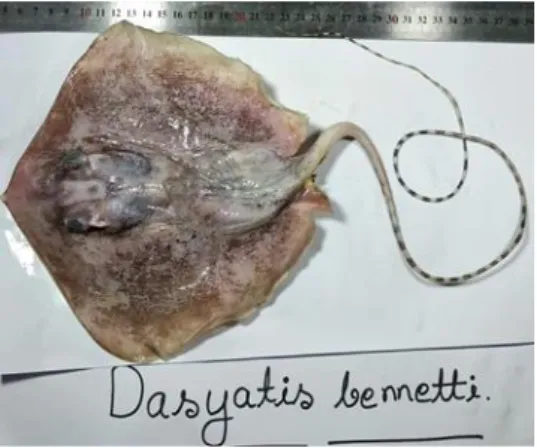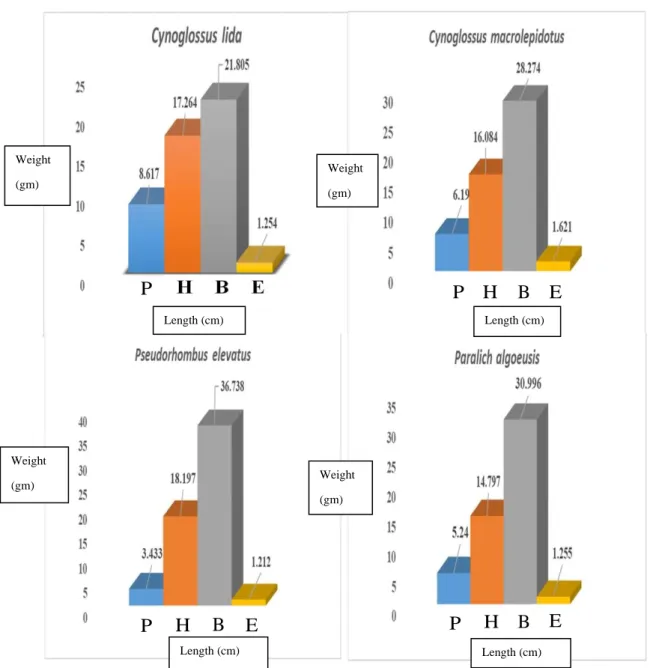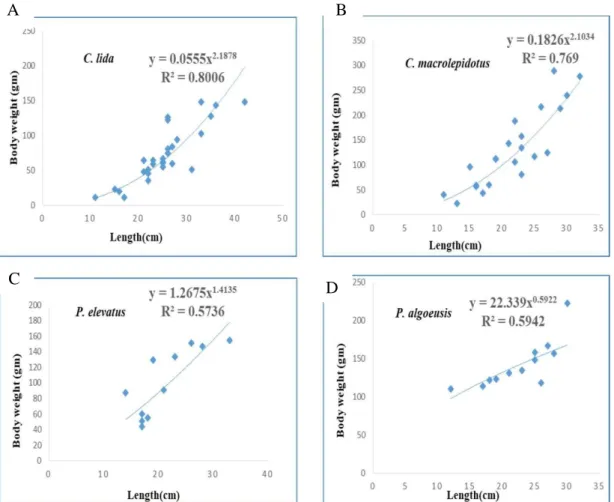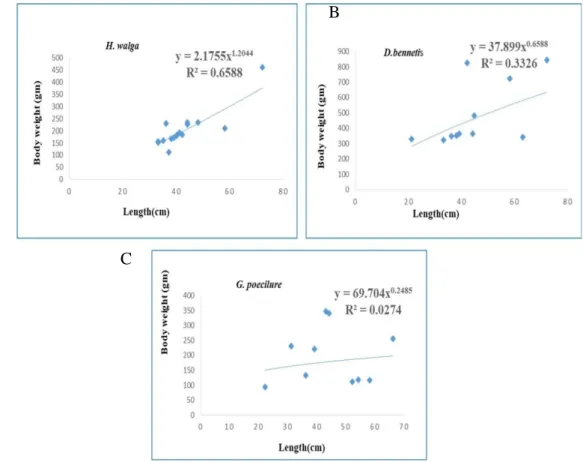Fishes of this family are considered as one of the most important predators in benthic communities (Khalil and Ibrahim, 2016). They are considered as one of the most important predators in benthic communities (Khalil and Ibrahim., 2016). The family Dasyatidae in the order Myliobatiformes is one of the largest families of Batoid fishes (Lim et al. 2015).
To determine the seasonal variation of availability and the regional distribution of the species under Cynoglossidae and Dasyatidae families. Some works have been done on different species of Cynoglossidae in different parts of the world. Mainly length-weight relationship of some species of Dasyatidae has been estimated in different parts of the world.
In addition, Last, et al., (2016) performed a reclassification of the family Dasyatidae based on some new morphological data. The following morphometric characteristics were considered for the study: Total length (TL): distance from the tip of the mouth to the terminal point of the caudal fin. Head Length (HL): Distance from the tip of the mouth to the posterior end of the operculum.
Pre-orbital length (PL): distance from the tip of the mouth to the anterior edge of the eye socket.
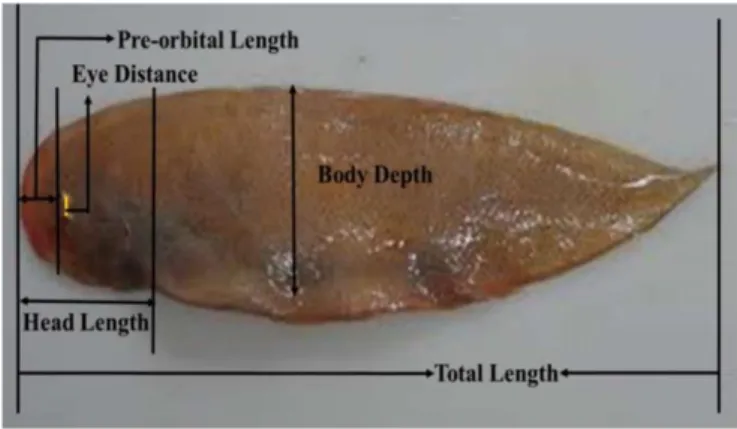
Apparent body characteristics: Two apparent body characteristics such as scale type and mouth pattern were taken into consideration for the study of
Body depth (BD): The maximum distance from the dorsal to the ventral part of the fish's body. Visible body features: Two visible body features such as scale type and mouth pattern were considered for the study of.
Species identification: By using phenotypic characters, the fish species were identified according to the reference books (Fish Encyclopedia)
Preservation: All the identified species were preserved at room temperature in the Oceanography laboratory of Chattogram Veterinary and Animal Sciences
The fish was soaked in formalin for 24 hours
Step 3: The fish was finally preserved in the preservative solution (Formaldehyde) which contains specific proportion of distilled water, formalin, glycerin and ethanol
Statistical analysis
Lₛ = total average standard length for all fish samples of the species Lₒ = standard length of fish sample. The 'b' parameter for each measurement was estimated as the slope of the regression of logMₒ on logLₒ using all fish in all groups. W = body weight of fish in gm L = total length of fish in cm a = constant (cross section) b = growth exponent.
The statistical part of the study was mainly emphasized on the morphological parameters of the available fishes of the families Cynoglossidae and Dasayatidae along the Chattogram coast. In the form of ratio of traits such as length-length ratio and length-weight ratio, percentage and power curve were plotted.
RESULT
- Morphometric characteristics of Cynoglossidae
- Morphometric characteristics of Dasyatidae
- Monthly species availability of Dasyatidae
- In percentage of total body length (Cynoglossidae)
- In percentage of total body length (Dasayatidae)
- Length-weight relationship of Cynoglossidae
- Length-weight relationship of Dasyatidae
They are characterized by the presence of a long hook on the snout that hangs over the mouth and the absence of pectoral fins. Their eyes are both on the left side of their bodies, which also lack a pelvic fin. During the study, a total of 72 samples were collected from three sampling stations throughout the sampling period.
After examination and analysis of the morphological and meristic characters, 4 species were identified as members of the Cynoglossidae family. Of the specimens, 27 were Cynoglossus lida, 22 were Cynoglossus macrolepidotus, 11 were Pseudorhombus elevatus, and 12 were Paralich algoeusis. The abundance of this family was found in December, i.e. 25 individuals of 2 species Cynoglossus lida and Cynoglossus macrolepidotus were found throughout the year, but not found in June and October.
Cynoglossus macrolepidotus was found in December and Paralich algoeusis in March and May. The morphometric measurements were expressed as the percentage of total length in the following figure. The height-weight association was made for each species using total length and body weight data.
From the graph, the equation of the power curve between total length and body weight was derived, with the help of which the values of parameters "a" and "b" were estimated.
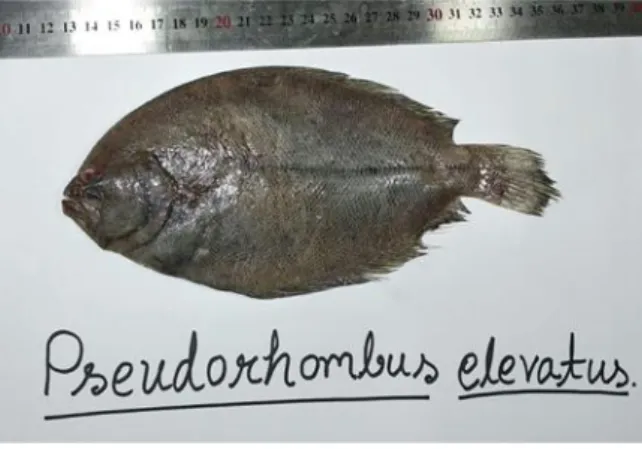
DISCUSSION
- Species availability
- Month and station wise variation in morphometric traits
- In percentage of total body length
- Length-weight relationship
The graphical presentation expressing the percentage of all morphometric measurements against total length showed that all fish species followed the same trend. For Cynoglossidae species they all show the same type where body depth is the highest percentage and eye diameter is the lowest percentage. There is no relevant data found on the coast of Bangladesh according to percentage of total body length of Dasyatidae and Cynoglossidae.
The length-weight relationship (LWR) is an important measure in fish stock and population evaluations in fisheries (Karna et al., 2018). The value of parameter 'b' of each fish species was calculated using the length-weight relationship, which revealed the species' growth trend. Cynoglossus lida had a 'b' value of 2.188 in the study, indicating that the species experienced negative allometric growth.
The soles in the Chattogram coastal region increased in length faster than in weight, according to the growth pattern. In this study, Himantura walga had a 'b' value of 1.2044, which is less than 3, indicating a negative allometric growth.
CONCLUSION
RECOMMANDATION
Life history, morphology and electrophoretic characteristics of five allopatric stocks of lake whitefish (Coregonus clupeaformis) in the Great Lakes region. Length-to-weight ratio of three Cynoglossus species (C. puncticeps, C. lingua and C. lida) from Chilika Lagoon, India. A revised classification of the family Dasyatidae (Chondrichthyes: Myliobatiformes) based on new morphological and molecular insights.
Molecular and morphological analyzes reveal phylogenetic relationships of rays focusing on the family Dasyatidae (Myliobatiformes). Current Status of Coastal Fisheries in Sitakunda Coast with Special Reference on Climate Change and Fisheries. Spatio-temporal patterns of abundance, biomass and length-weight relationships of Dasyatis species (Pisces: Dasyatidae) in the Gulf of Antalya, Turkey (Levantine Sea).
Some morphometric studies of five species of Cynoglossus (family Cynoglossidae, order Heterosomata) from the west coast. Estimation of condition factor for Bengal sole (Cynoglossus cynoglossus) in the Bay of Bengal, Bangladesh.
BIOGRAPHY

